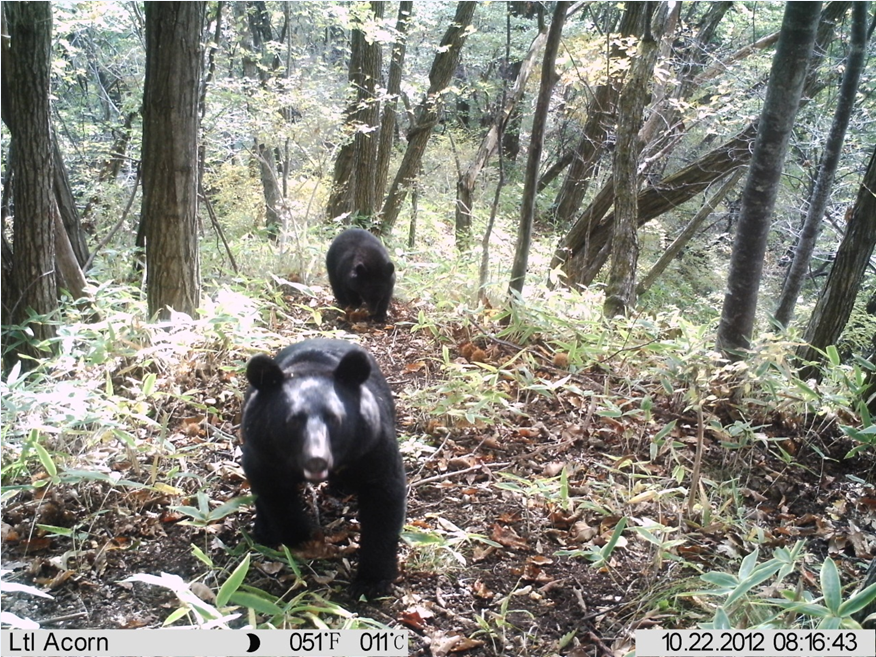Diet and depression • The epidemiology of retraction • Use it or lose it • Japanese black bears • Fantastic history of the fox • There’s something in the water • Midgut microbes & moonmilk • A checklist for effective pilot trials

Psychiatry: Diet and depression
Recent evidence suggests that there may be a possible link between the development of depressive symptoms and the quality of diet. Now, a comprehensive systematic review gathers together the best available evidence from across the globe but finds limited evidence to support a correlation between traditional Mediterranean, Japanese or Western diets and risk of depression in adults. These finding therefore suggest that further work may still be needed to confirm whether such a link exists.
Publication ethics: The epidemiology of retraction
An in-depth analysis of all published retractions from the medical literature in 2008 reveals that the most common reasons for issuing retractions were mistakes, plagiarism, and fraud, whilst 9% of articles did not specify the reason for removing the article. In the light of this evidence, Evelyne Decullier and colleagues argue that a standardised form is now needed to ensure compliance with the guidelines outlined by the Committee on Publication Ethics (COPE) on best practice for article retractions.
Bioinformatics: Use it or lose it
In the field of bioinformatics, many database and software articles are created each year to meet the growing analytical demands of rapidly changing fields. But as a researcher, how do you identify which are the most well-used—and useful—applications out there in the so-called “resourceome”? A new application called bioNerDS aims to help by mining the primary literature to analyse usage patterns of different published applications. Why not revisit the manuscript in a year’s time to see how it fairs under its own analysis?
Image of the month

Japanese black bears (Ursus thibetanus japonicus). From Takahashi & Takahashi “Spatial distribution and size of small canopy gaps created by Japanese black bears: estimating gap size using dropped branch measurements”
Evolution: Fantastic history of the fox
A synthesis of mitochondrial sequence data from central Asian and European red fox populations unravels the evolutionary history of this species over the last 300,000 years, and uncovers a remarkable similarity to the phylogeographic patterns observed in other carnivores such as brown bears and grey wolves, which share a similar range.
Infectious diseases: There’s something in the water
Risk of systemic infection from opportunistic fungal pathogens may be very high among immunocompromised patients undergoing hospital treatment. Although air-borne pathogens are a well-studied route to infection, the incidence of water-borne infection is less well known. A study of samples collected from the water supply system of a Haematopoietic Stem Cell Transplantation unit in Sao Paulo, Brazil, finds that almost 85% of samples tested positive for filamentous fungi, including Fusarium solani which is known to have infected at least one patient in that specific hospital ward.
Microbiology: Midgut microbes & moonmilk
The cave beetle Cansiliella servadeii is an endemic species that dwells in the deep carbonate caves of North-Eastern Italy, where it feeds on a watery mineral solution called “moonmilk”. This solution is home to a large biomass of microbes which may be ingested by the beetles during feeding. However, analysis of the beetle’s midgut bacteria reveals little overlap with these puddle-dwelling communities, and very low similarity with previously identified sequences— suggesting a gut flora that may be unique to this species.
Medical research: A checklist for effective pilot trials
Pilot trials are crucially important in informing how a full-scale clinical trial is conducted, and so ensuring that key features of these initial studies can still be used in the main trial analysis helps in maintaining an efficient transition between these two stages. To ensure best practice is followed when results from the pilot are intended for use in the main trial, Georgina Charlesworth and co-workers have developed a checklist for researchers to follow, illustrated with an example from a psychosocial intervention.
![]() Follow @BMC_series
Follow @BMC_series
![]() Watch our YouTube channel
Watch our YouTube channel
![]() Browse our list of journals
Browse our list of journals
![]() Subscribe to updates from the blog
Subscribe to updates from the blog
Comments